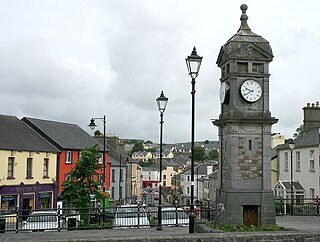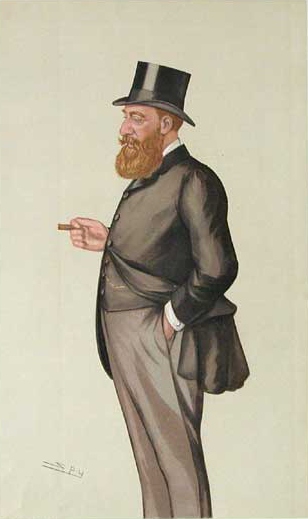
John Nash was one of the foremost British architects of the Georgian and Regency eras, during which he was responsible for the design, in the neoclassical and picturesque styles, of many important areas of London. His designs were financed by the Prince Regent and by the era's most successful property developer, James Burton. Nash also collaborated extensively with Burton's son, Decimus Burton.

Earl of Kingston is a title in the Peerage of Ireland. It was created in 1768 for Edward King, 1st Viscount Kingston. The Earl holds the subsidiary titles Baron Kingston, of Rockingham in the County of Roscommon, Viscount Kingston, of Kingsborough in the County of Sligo, Baron Erris, of Boyle in the County of Roscommon, and Viscount Lorton, of Boyle in the County of Roscommon, also in the Peerage of Ireland. He is also a baronet in the Baronetage of Ireland. Between 1821 and 1869 the earls also held the title Baron Kingston, of Mitchelstown in the County of Cork, in the Peerage of the United Kingdom.

Boyle is a town in County Roscommon, Ireland. It is located at the foot of the Curlew Mountains near Lough Key in the north of the county. Carrowkeel Megalithic Cemetery, the Drumanone Dolmen and the lakes of Lough Arrow and Lough Gara are also close by. As of 2016, the population of the town was 2,568.

Lough Key is a lake in Ireland. It is in the northwest of County Roscommon, northeast of the town of Boyle. The lough is believed to be named after a mythical figure named Cé.
Baron Kingston is a title that has been created twice in the Peerage of Ireland and once in the Peerage of the United Kingdom. The first creation came in 1660 when the military commander Sir John King was made Baron Kingston, of Kingston in the County of Dublin. He was the elder brother of Sir Robert King, 1st Baronet, of Boyle Abbey. Two of his sons, the second and third Barons, both succeeded in the title. The title became extinct in 1761 on the death of the latter's son, the fourth Baron, who had no surviving male issue. However, the title was revived three years later when his kinsman Sir Edward King, 5th Baronet, of Boyle Abbey, was made Baron Kingston, of Rockingham in the County of Roscommon. He was also created Viscount Kingston in 1766 and Earl of Kingston in 1768.

Dartrey Forest is a forest and estate near Rockcorry in north-west County Monaghan, Ireland. It was formerly part of the Barony of Dartrey and was the country estate of the Dawson family, who had the title Earl of Dartrey from 1866 to 1933.

Edward Robert King-Harman was an Irish landlord and politician. He sat in the House of Commons of the United Kingdom between 1877 and 1888 as an Irish nationalist, and later Unionist, Member of Parliament.

Ahascragh is a village in east County Galway, Ireland. It is located 11 km (7 mi) north-west of Ballinasloe on the Ahascragh/Bunowen River, a tributary of the River Suck. The R358 regional road passes through the village. As of the 2022 census, it had a population of 186 people.
General Robert Edward King, 1st Viscount Lorton, styled The Honourable from 1797 to 1800, was an Anglo-Irish peer and politician. He was notable for his strong support for anti-Catholic policies and his close association with the Orange Order.

Lough Key Forest Park is an 800-hectare park on the southern shore of Lough Key, 40 km south east of Sligo town and 3 km east of Boyle, County Roscommon, Ireland. Formerly part of the Rockingham Estate laid out by the King family, it is open to the public.

Ardcarn or Ardcarne is a civil parish in County Roscommon, Ireland, 8 km north-west of Carrick-on-Shannon.
Lyons Demesne, also Lyons Estate, is a country house and estate in Lyons Hill, County Kildare, Ireland. It is located near Newcastle Demesne and Celbridge, to the northeast of Tipperstown, 24.8 kilometres (15.4 mi) west of the city centre of Dublin. The Georgian house, completed in 1797 under architect Oliver Grace, is set in 600 acres (240 ha). Historically, Lyons was the setting of a notable duel between Daniel O'Connell and John D'Esterre. University College Dublin, Lyons Research Farm consists of a portion of the original Lyons Estate and is used by the School of Agriculture, Food Science and Veterinary Medicine for teaching and research activities.

Killruddery House is a large country house on the southern outskirts of Bray in County Wicklow, Ireland, approximately 20 km (12 mi) south of Dublin. The present structure is a south facing multi-bay mansion, originally dating from the 17th century, but remodelled and extended in 1820 in the Elizabethan style. It is constructed as variously single, two, three and four storeys in the shape of an irregular quadrangle enclosing a courtyard. To the north an office wing incorporates the 17th-century portion and to the south and west is a large domed conservatory, the orangery, designed by William Burn in about the 1850s. The house sits within a large landscaped demesne which features a pair of 550-foot long parallel reflecting pools on the south lawn.

Kilronan Castle, previously known as Castle Tenison, is a large country house standing in 40 acres (16 ha) of parkland on the shore of Lough Meelagh in County Roscommon, Republic of Ireland, 2 kilometres (1.2 mi) from the village of Ballyfarnon.
Henry King PC (I) was an Anglo-Irish politician.
Sir Cecil William Francis Stafford-King-Harman, 2nd Baronet was an Anglo-Irish landowner and soldier.

Santry Court was a Georgian house and demesne in Santry, north County Dublin built between 1703-09 on the site of an earlier medieval residence.

Mote Park House was a house and estate in Ballymurray, County Roscommon, Ireland, the ancestral home of the Crofton family who settled in the area in the sixteenth century. At its height around 1880, the estate contained around 7,000 acres.
















